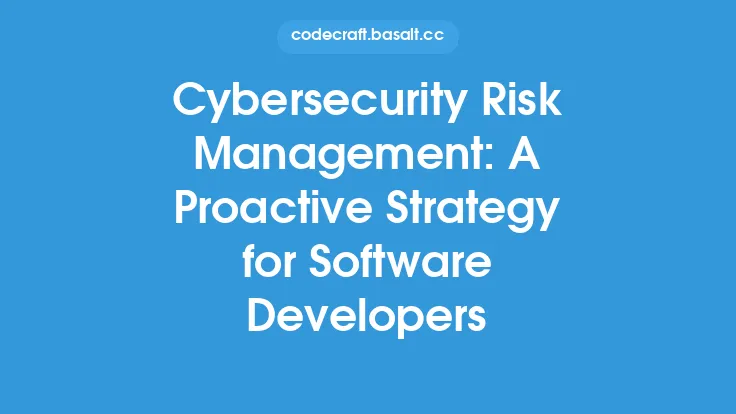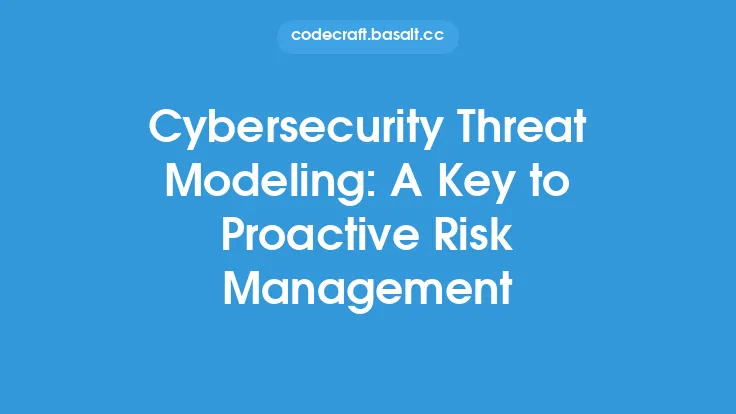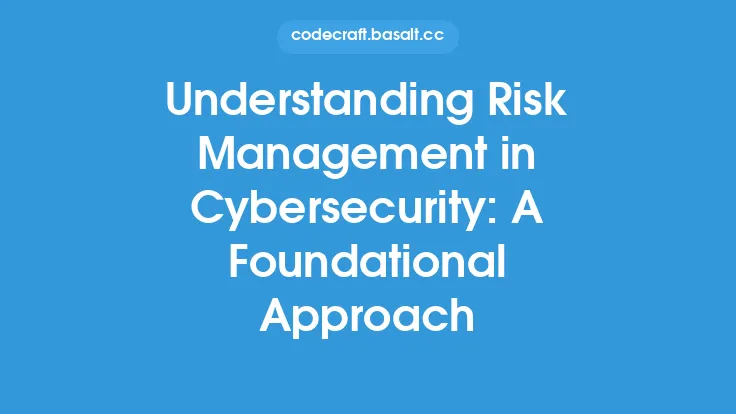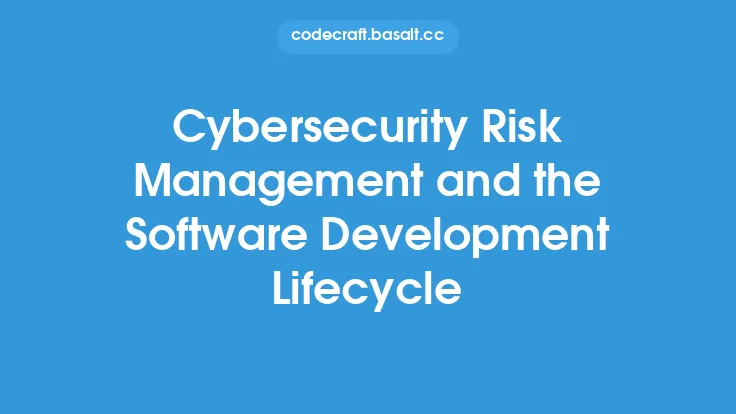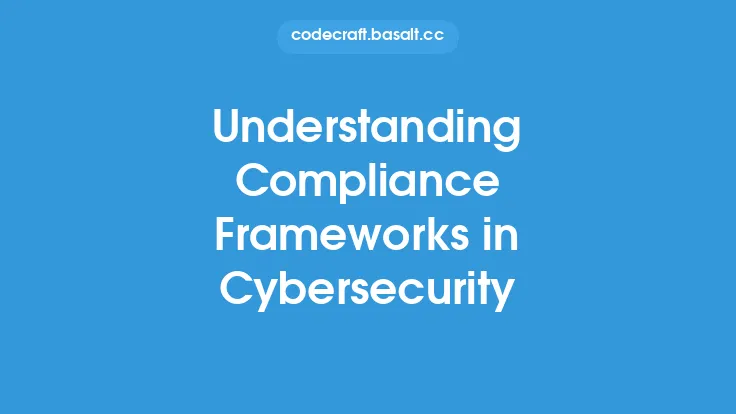Cybersecurity risk management is a critical component of any organization's overall security posture. It involves identifying, assessing, and mitigating potential risks to an organization's digital assets, data, and systems. A risk management framework is a structured approach to managing risk, providing a systematic and comprehensive methodology for identifying, analyzing, and mitigating risks. In the context of cybersecurity, a risk management framework is essential for ensuring the confidentiality, integrity, and availability of an organization's digital assets.
Introduction to Risk Management Frameworks
A risk management framework is a set of guidelines, policies, and procedures that provide a structured approach to managing risk. It is designed to help organizations identify, assess, and mitigate potential risks, and to ensure that risk management is integrated into all aspects of the organization. A risk management framework typically includes several key components, including risk identification, risk assessment, risk mitigation, and risk monitoring. It is essential to note that a risk management framework is not a one-time event, but rather an ongoing process that requires continuous monitoring and evaluation.
Key Components of a Risk Management Framework
A risk management framework for cybersecurity typically includes several key components, including:
- Risk identification: This involves identifying potential risks to an organization's digital assets, data, and systems. Risk identification can be performed using various techniques, such as threat modeling, vulnerability scanning, and penetration testing.
- Risk assessment: This involves assessing the likelihood and potential impact of identified risks. Risk assessment can be performed using various methodologies, such as quantitative risk assessment and qualitative risk assessment.
- Risk mitigation: This involves implementing controls and countermeasures to mitigate identified risks. Risk mitigation can include various measures, such as implementing firewalls, intrusion detection systems, and encryption.
- Risk monitoring: This involves continuously monitoring and evaluating the effectiveness of risk mitigation measures. Risk monitoring can include various activities, such as log analysis, incident response, and vulnerability management.
Popular Risk Management Frameworks
There are several popular risk management frameworks that can be used for cybersecurity, including:
- NIST Cybersecurity Framework: This framework provides a structured approach to managing cybersecurity risk, and includes several key components, such as identify, protect, detect, respond, and recover.
- ISO 27001: This framework provides a set of guidelines and best practices for managing information security risk, and includes several key components, such as risk assessment, risk treatment, and risk monitoring.
- COBIT: This framework provides a set of guidelines and best practices for managing IT risk, and includes several key components, such as risk identification, risk assessment, and risk mitigation.
- OCTAVE: This framework provides a structured approach to managing cybersecurity risk, and includes several key components, such as risk identification, risk assessment, and risk mitigation.
Implementing a Risk Management Framework
Implementing a risk management framework for cybersecurity requires a structured approach, and involves several key steps, including:
- Establishing a risk management policy: This involves defining the organization's risk management approach, and establishing clear guidelines and procedures for managing risk.
- Identifying and assessing risks: This involves identifying potential risks to the organization's digital assets, data, and systems, and assessing the likelihood and potential impact of identified risks.
- Implementing risk mitigation measures: This involves implementing controls and countermeasures to mitigate identified risks, such as firewalls, intrusion detection systems, and encryption.
- Continuously monitoring and evaluating risk: This involves continuously monitoring and evaluating the effectiveness of risk mitigation measures, and making adjustments as needed.
Benefits of a Risk Management Framework
A risk management framework for cybersecurity provides several benefits, including:
- Improved risk management: A risk management framework provides a structured approach to managing risk, and helps ensure that risk management is integrated into all aspects of the organization.
- Enhanced security posture: A risk management framework helps ensure that the organization's digital assets, data, and systems are adequately protected, and that potential risks are identified and mitigated.
- Compliance with regulatory requirements: A risk management framework can help organizations comply with regulatory requirements, such as HIPAA, PCI-DSS, and GDPR.
- Cost savings: A risk management framework can help organizations reduce costs associated with managing risk, such as the cost of implementing and maintaining security controls.
Challenges and Limitations of Risk Management Frameworks
While risk management frameworks can provide several benefits, there are also several challenges and limitations to consider, including:
- Complexity: Risk management frameworks can be complex and difficult to implement, particularly for small and medium-sized organizations.
- Cost: Implementing a risk management framework can be costly, particularly for large and complex organizations.
- Limited resources: Small and medium-sized organizations may not have the resources or expertise to implement a risk management framework.
- Evolving threats: Cyber threats are constantly evolving, and risk management frameworks must be continuously updated and refined to address emerging threats.
Best Practices for Implementing a Risk Management Framework
To ensure the effective implementation of a risk management framework, several best practices should be followed, including:
- Establish clear risk management policies and procedures: This involves defining the organization's risk management approach, and establishing clear guidelines and procedures for managing risk.
- Provide ongoing training and awareness: This involves providing ongoing training and awareness to employees and stakeholders on the importance of risk management, and the role they play in managing risk.
- Continuously monitor and evaluate risk: This involves continuously monitoring and evaluating the effectiveness of risk mitigation measures, and making adjustments as needed.
- Foster a culture of risk management: This involves fostering a culture of risk management within the organization, and encouraging employees and stakeholders to take an active role in managing risk.
